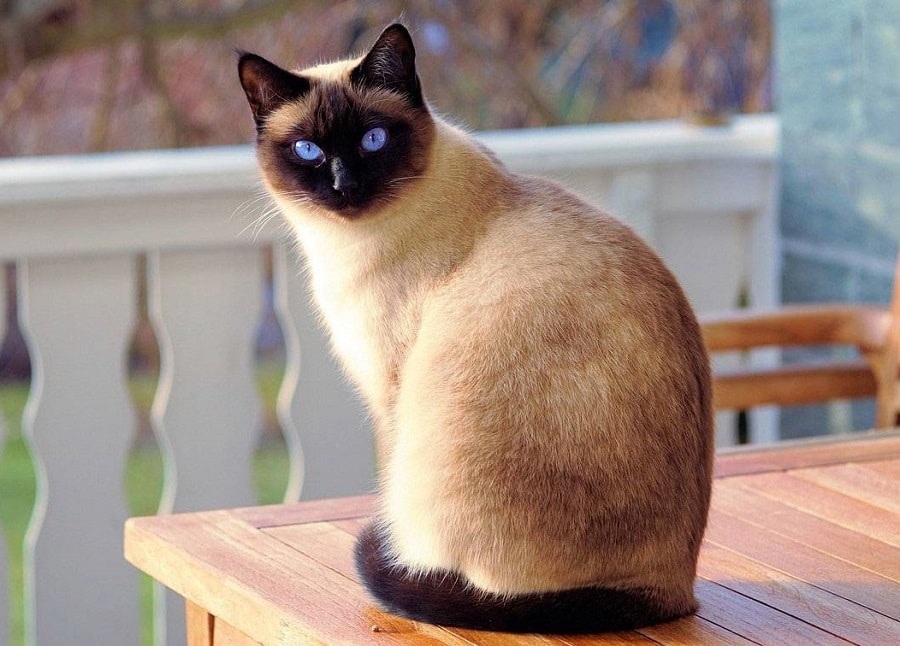
As much as we may consider ourselves all-around animal lovers, when it comes to choosing a pet of our own, researching how a particular type or breed of an animal may suit your personality, lifestyle, and household can make a big difference.
Once you have narrowed your choice down to cats in general, it’s time to consider what breed of cat may best fit into your world. Like with dogs, cat breeds can differ significantly regarding temperament, behavioral differences, and general care needs.
Here’s everything you need to know before getting a Siamese cat.
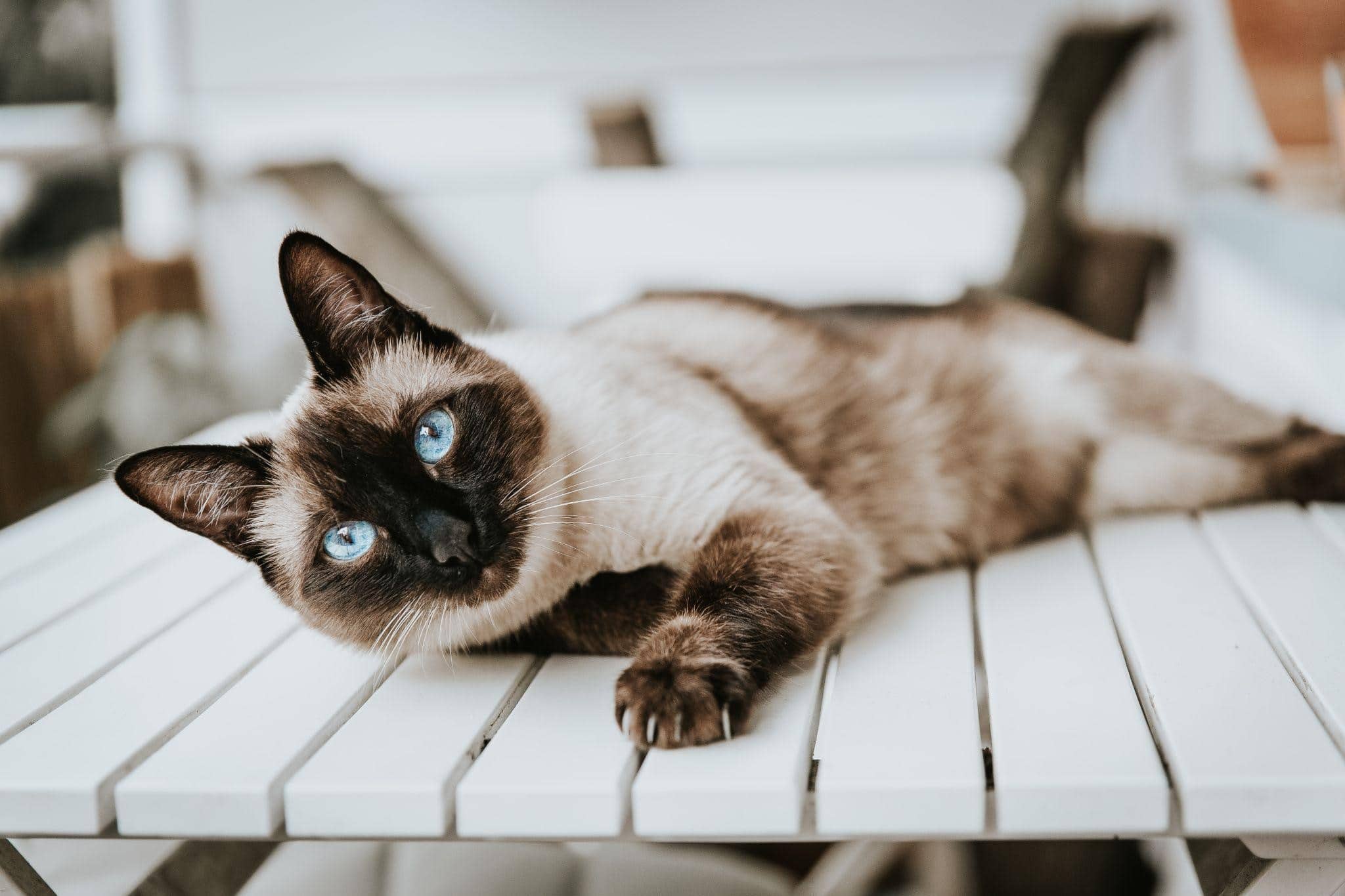
Originating from Thailand, Siamese cats are named after ‘Siam,’ the original name of Thailand; they are one of the oldest recognized Oriental cat breeds.
The breed was originally common among royal families, and the belief was that these cats would receive the soul of a deceased family member.
Siamese cats were first introduced to America in the 19th century, when a US diplomat based in Thailand gifted one to First Lady Lucy Hayes, the wife of then-president Rutherford B. Hayes.
Many are easily lured in by their big blue eyes, beautiful coloring, and elegant movements, but there is much more to a Siamese cat than meets the eye!
There are both traditional and modern breed variations of Siamese cats. Traditional Siamese cats (from Thailand) fall into three categories. These are:

Named after the shape of their head, apple head Siamese cats have original dark brown coloring, black points, and shorter tales. They are athletic but tend to be quieter in personality. They suit owners who prefer less chatty cats.
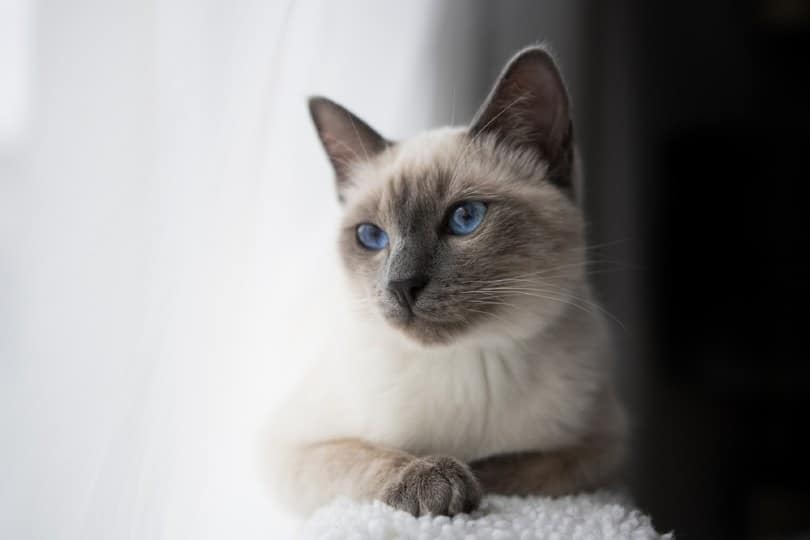
Classic Siamese cats have long, athletic bodies and longer tails, too. However, their most striking features include their round heads, smooth bodies, classic dark points, and brilliant blue eyes.
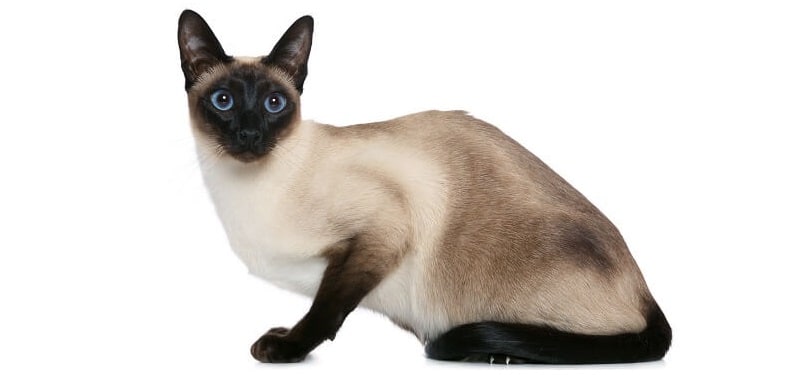
Most popular in the 1950s, old-style Siamese cats are a blend of apple heads and modern wedge Siamese cats and have mid-sized bodies with longer faces and broad ears. They also tend to have the common cross-eyed Siamese trait.
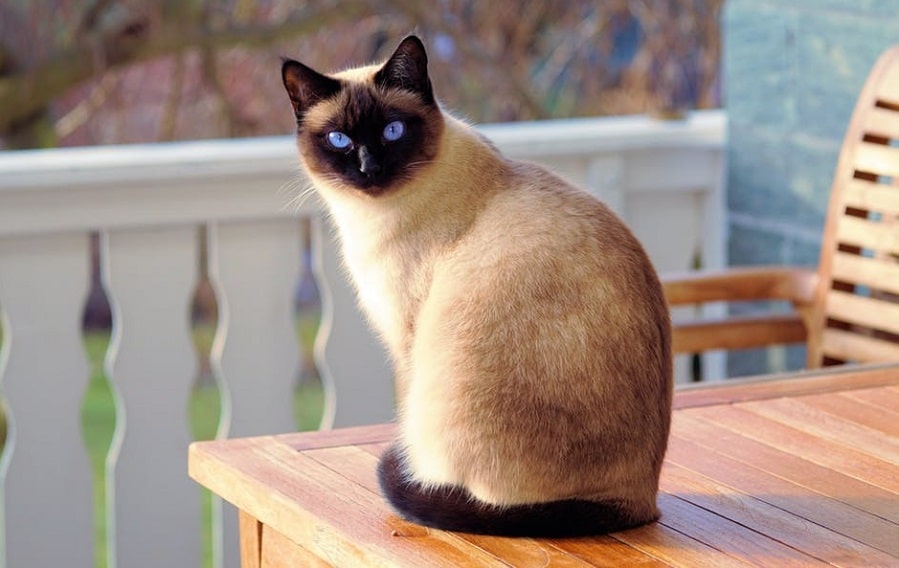
Siamese cats have become a symbol of style since they arrived in the west, and breeders continue to change their characteristics.
Modern Siamese cats are leaner and taller than traditional breeds, and are typically more vocal and inquisitive. Types include:
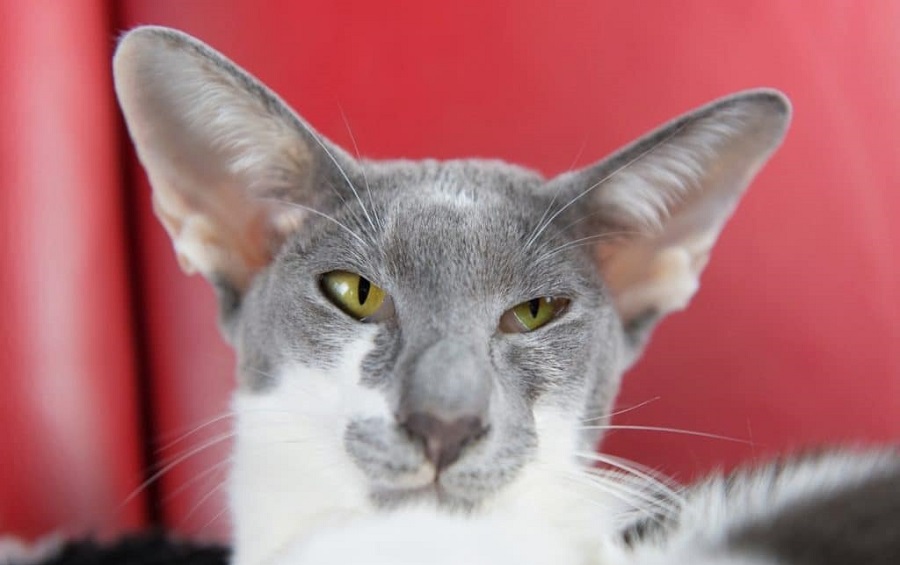
Sometimes known as ‘Wedgies,’ the Wedge Siamese features a particularly triangular (or wedge-shaped) head, and ears that hang lower than their traditional counterparts. They also have thin tails, long faces, and eyes that slant a little.
Wedgies can be very loud and chatty, sometimes meowing most of the day – they need plenty of exercise and stimulation to keep them occupied.
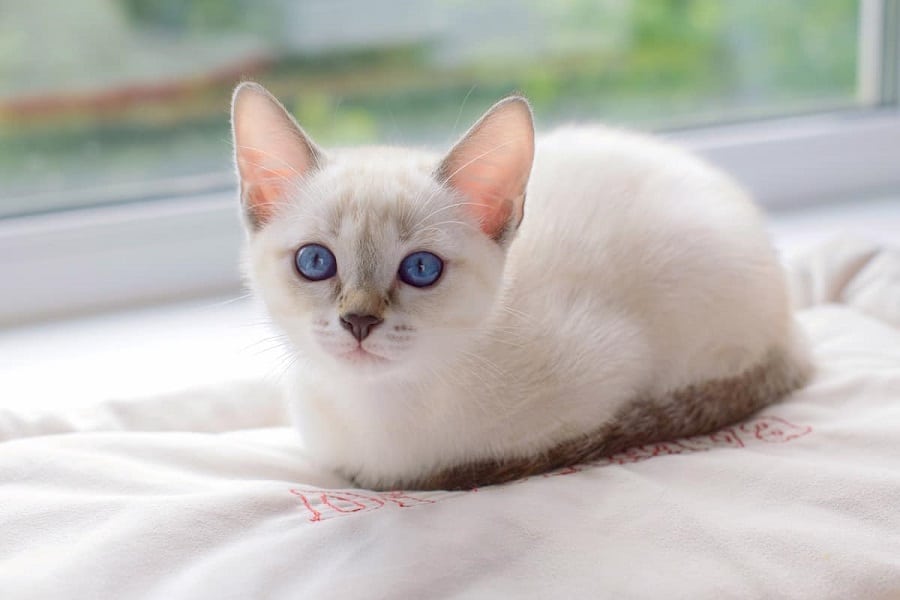
Named for the lilac hues through their coat, Lilac Points have fewer brown colors in their coats. They are a breeding blend of Blue Points and Chocolate cats.
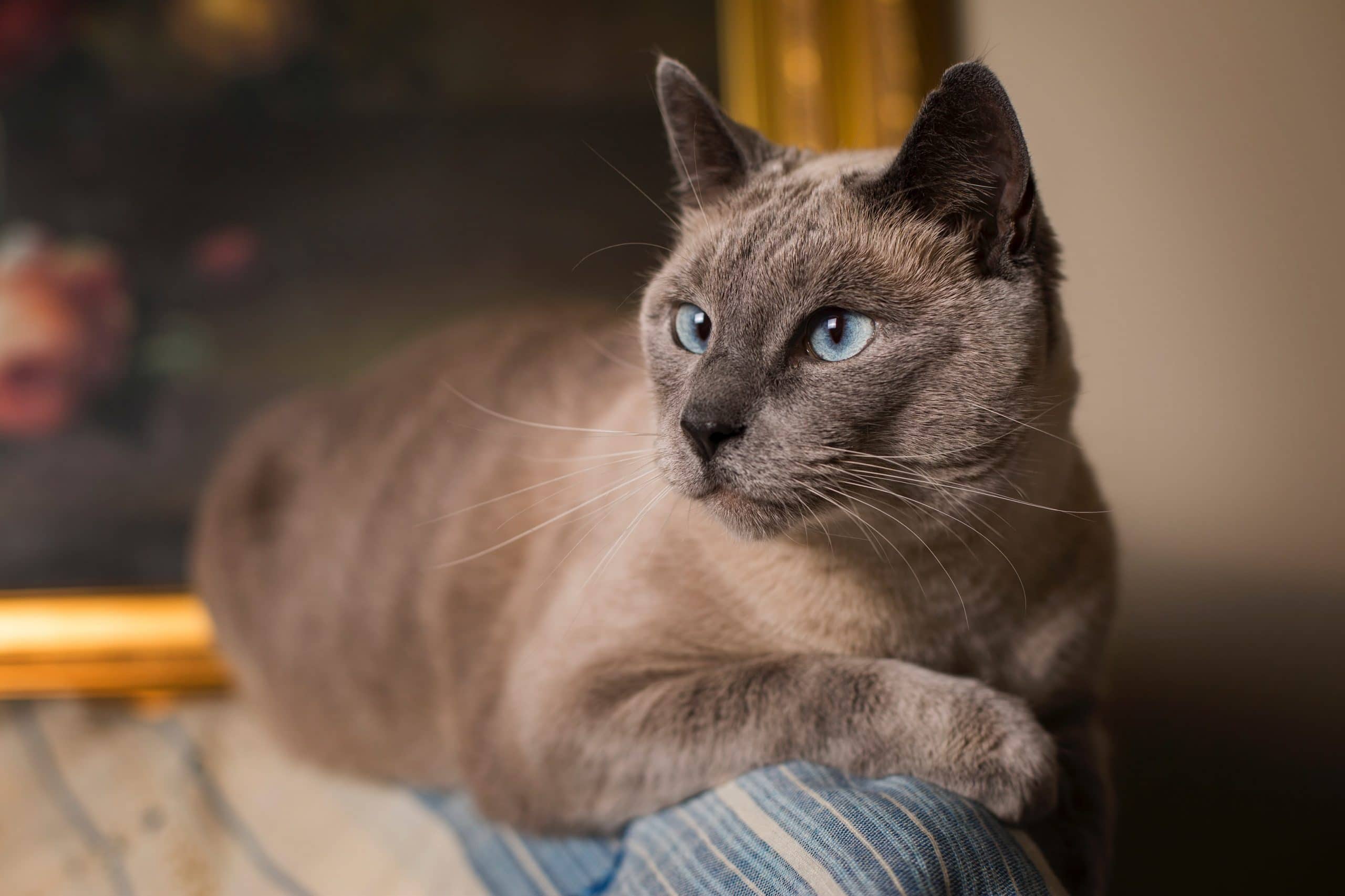
These sweeties have a light brown/cream-colored body shade accented with chocolate-colored points. They are lighter in color than Seal Points, and the pads and nose are typically pinkish.
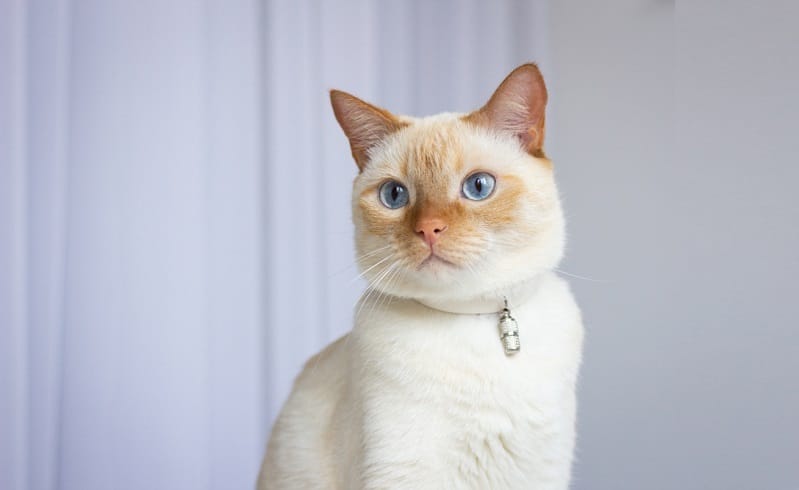
Cream Points are much lighter in color, with soft, white bodies and pale pink leather paw pads. The Cream Point is a blend of Abyssinian, RedPoint Siamese, and Domestic Shorthair cats.
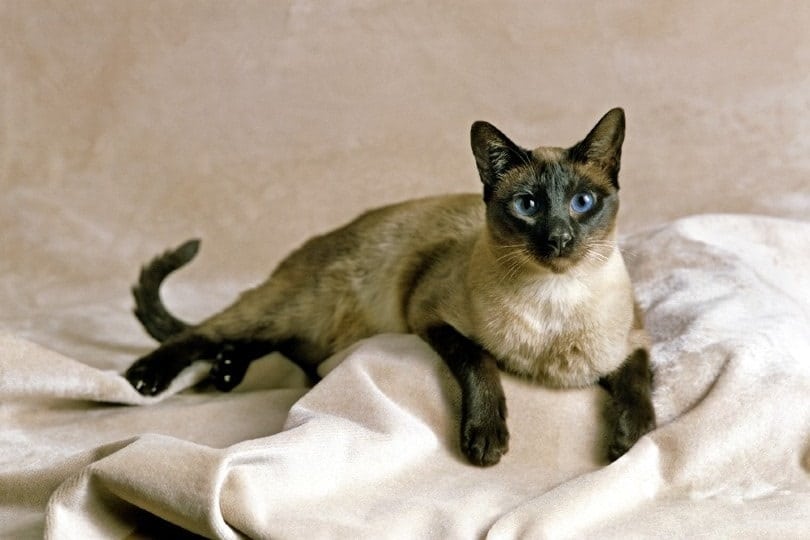
Seal Points are recognizable by their fawn-colored body coat and deep brown points (resembling a seal)
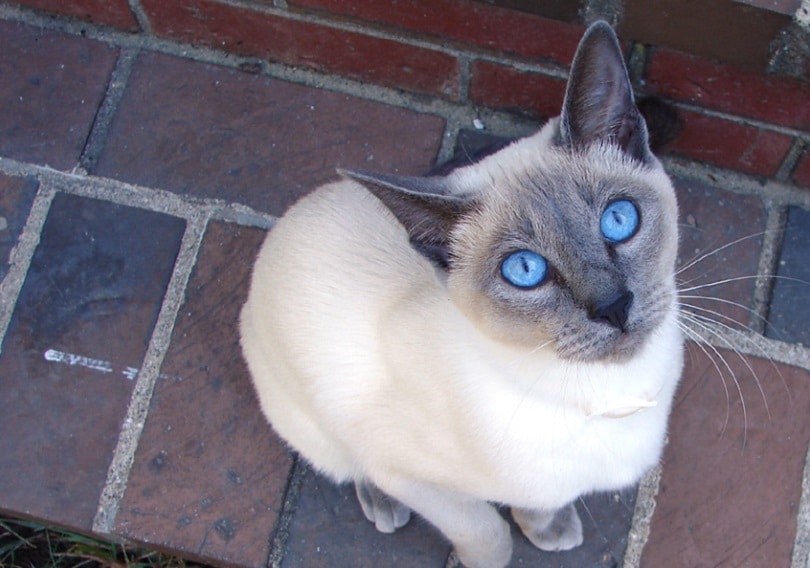
The Blue Points have a distinct bluish fur on their ears, face, and the tip of their tail.
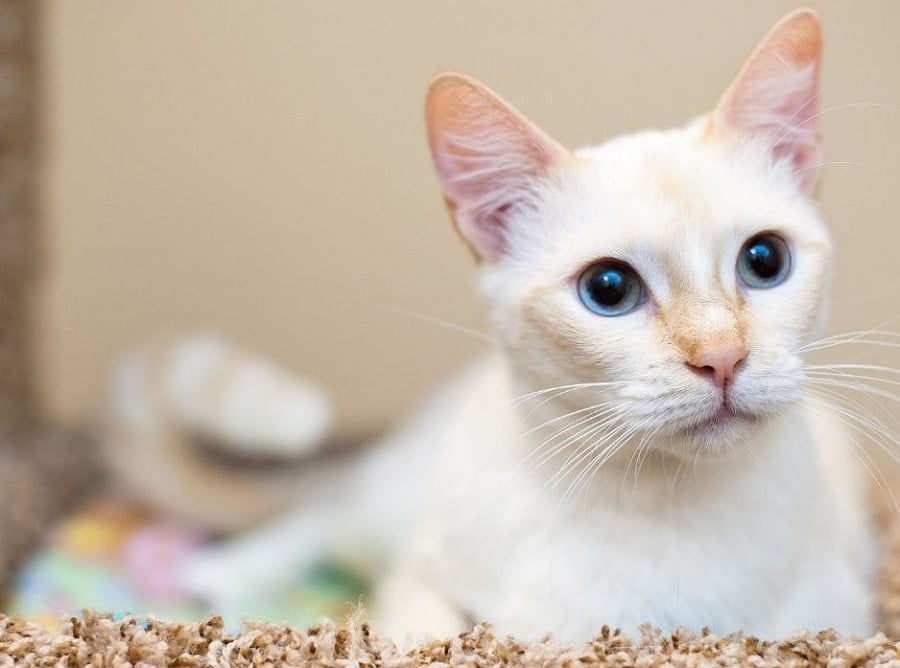
This rare type of Siamese cat was created by crossbreeding Seal Points with shorthair tortoiseshell or tabby cats that carry the orange color genes. This blend results in the orange and crimson fur shades they have, as well as touches of red or orange points on the face, tails, ears, legs, and paws.
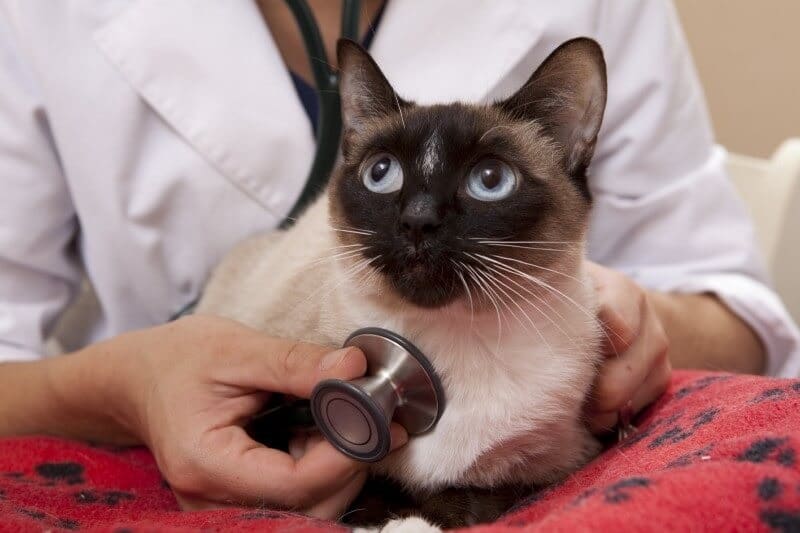
Siamese cats typically live for between 12 and 15 years, which is a little less than most feline breeds.
So long as they are well-cared for and receive regular health checks, they may live to 15 years or more, but they can be prone to some health conditions, so it’s important to know how to best prevent these.
Firstly, respiratory illnesses such as asthma and bronchitis are commonly seen in Siamese cats. Keeping them at a healthy weight and using dust-free litter materials can help to prevent these conditions, as well as regular vet checks.
Some Siamese suffer malnourishment due to their pickiness when it comes to food. Still, others can be prone to developing obesity – their slender legs are not designed to withstand this, so it’s critical that you do not overfeed a Siamese cat.
Gastrointestinal issues, urinary tract infections, and gum disease are also quite common in Siamese cats, as well as progressive retinal atrophy (eye health issues). Ultimately, as with any pet, a healthy diet, regular exercise, and veterinary health checkups are vital to maintaining health in the long term.
Siamese cats are generally calm and can be quite independent, but they don’t appreciate being left alone for too long. They don’t require constant attention, but they do like their pet parents to be around in the home.
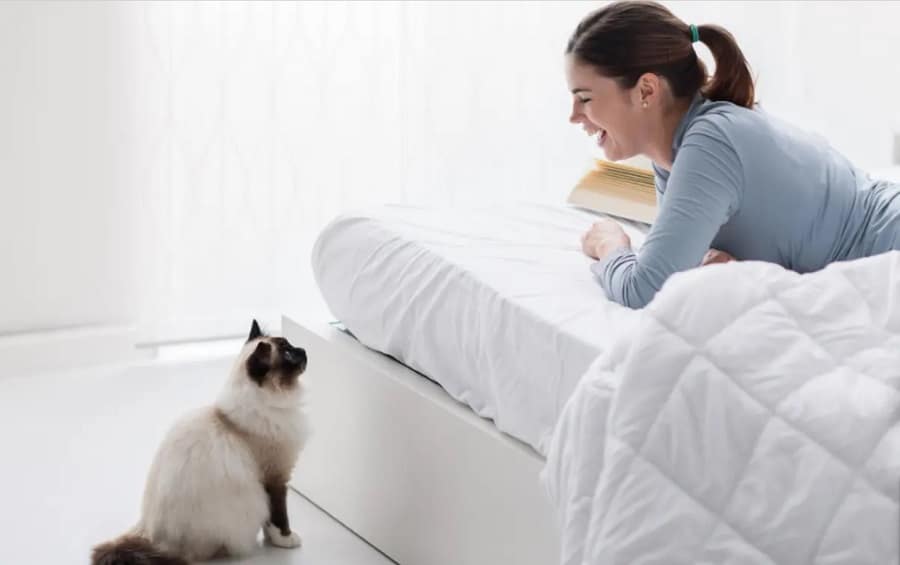
Siamese cats are notoriously chatty. They aren’t afraid to voice their opinions on just about anything – playtime, food, attention; you name it, they are ready to vocalize.
They can become naggy in their meowing, seeking attention, or complaining if they are lacking in socialization. Hence, they are best suited to households where they can receive plenty of attention and interaction.
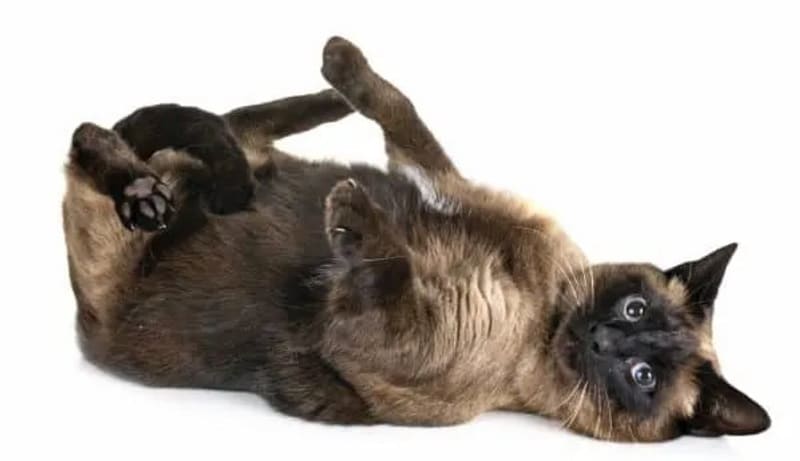
Although they are very calm and tolerant in nature, Siamese cats become quite clingy. They aren’t typically lap cats, but they do tend to like remaining close to their pet parents, sleeping, and snuggling with them regularly.
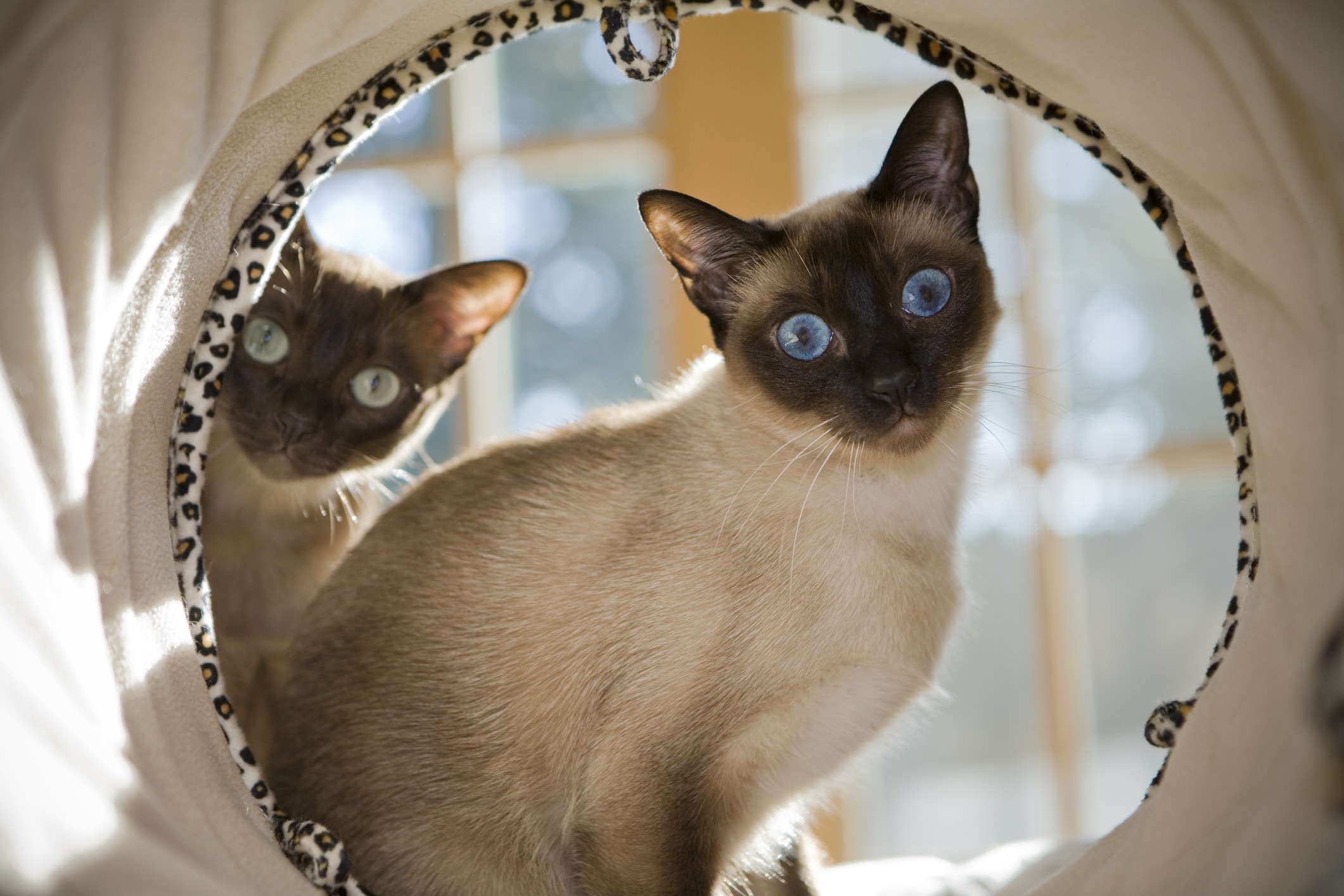
Most Siamese cats are very intelligent and surprisingly trainable for felines. Siamese cats can be taught to jump through hoops, walk on a leash, give high fives, and even play fetch!
Of course, each cat is unique, and not all Siamese cats are automatically highly trainable. That said, the breed is significantly perceptive overall, so most are generally quick to learn commands.
It’s important to keep them engaged and entertained, so having a variety of toys and climbing options is preferable. Clearing a spot by a window is also a great way to let them relax while watching the wildlife – keeping a birdcage indoors might be a recipe for disaster!
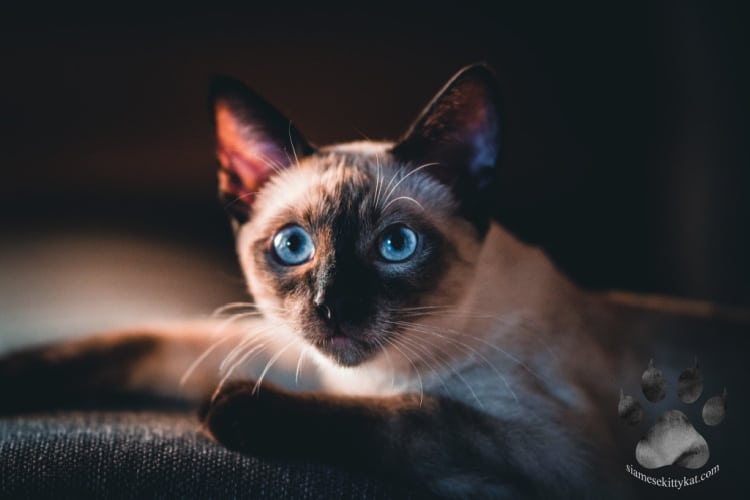
Generally speaking, felines have excellent eyesight and can see well in the dark. Unfortunately, Siamese cats aren’t quite so lucky.
In general, the Siamese breed cannot see as well in the dark as other cat breeds. This is because they have difficulty distinguishing details in dark environments due to the genes that cause the blue pigment in their eyes.
Siamese cats also lack tapetum lucidum – a special layer that assists other cats in seeing better in the dark by enabling more light to pass through their retinas. Unfortunately, poor eyesight is a common problem for many Siamese cats.
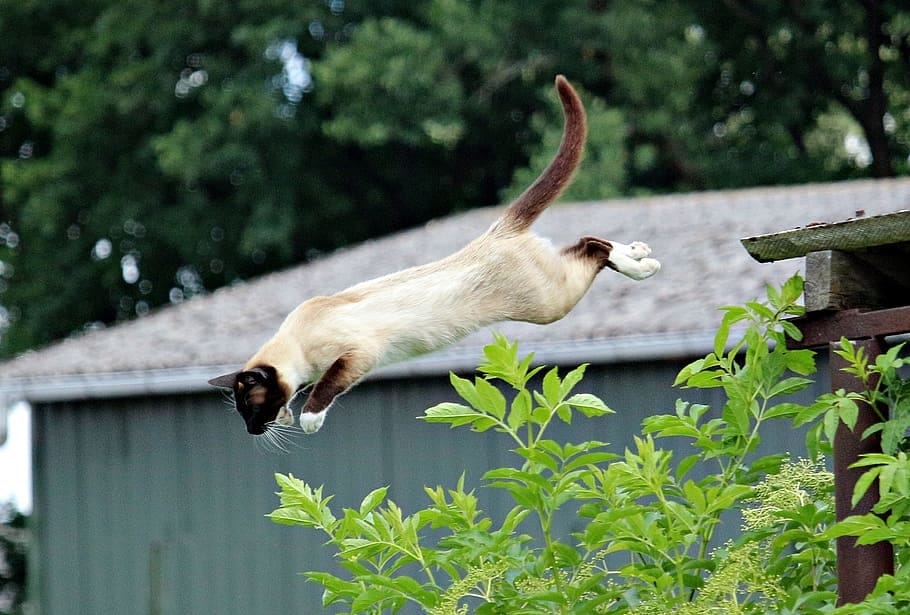
Siamese cats have long, elegant, slender bodies that are perfect for executing surprisingly high jumps. The breed is also fascinated by heights and generally won’t shy away from exploring every inch of furniture in the house, however high or difficult to reach.
To keep a Siamese cat entertained, it’s ideal to provide them with a range of perches, especially high ones. Cat trees and scratching posts are also a great option.
If you’re in the market for a cat that is too lazy to jump all over your house, drapes, and counters, a Siamese cat is not for you!
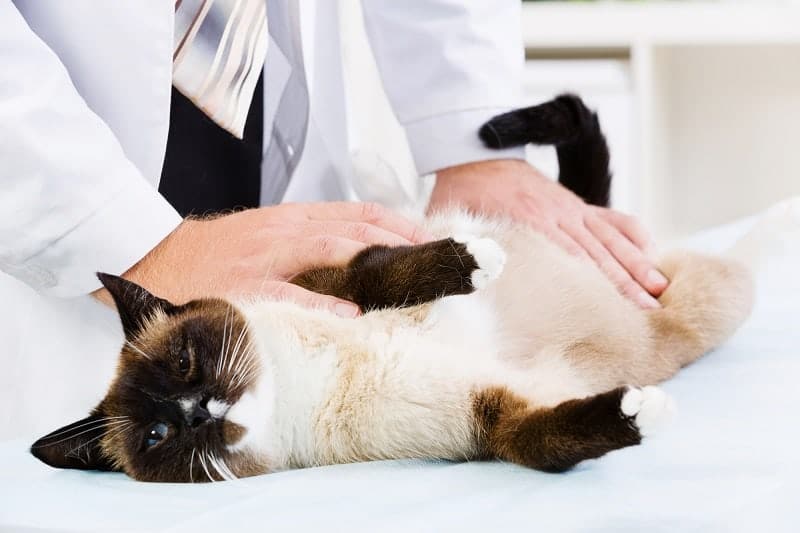
Thanks to their short, glossy coat of fur – as well as the fact that it lacks any undercoat – Siamese cats require less grooming than the average domestic feline. They may enjoy a nice massaging brush and grooming session, but there will be little need for it in terms of maintenance, and certainly no requirement for de-shedding tools.

As obligate carnivores, Siamese cats eat typical cat food fed to other feline breeds. They often favor cooked ham or turkey. They can be prone to having sensitive stomachs, so easily digestible food is preferable.
The best food for Siamese cats includes plenty of protein sources like chicken and fish, and a balanced diet of both wet and dry food featuring all of the nutrition they need. Homemade and raw foods can be a good choice too, just be careful to check individual ingredients first, as your Siamese may like the taste of some human foods, but they may be toxic or dangerous for them to eat. Again, some Siamese cats can be prone to obesity, so make sure you keep their diet healthy and well-balanced, avoiding carrageenan, artificial preservatives, dyes, or artificial flavors.
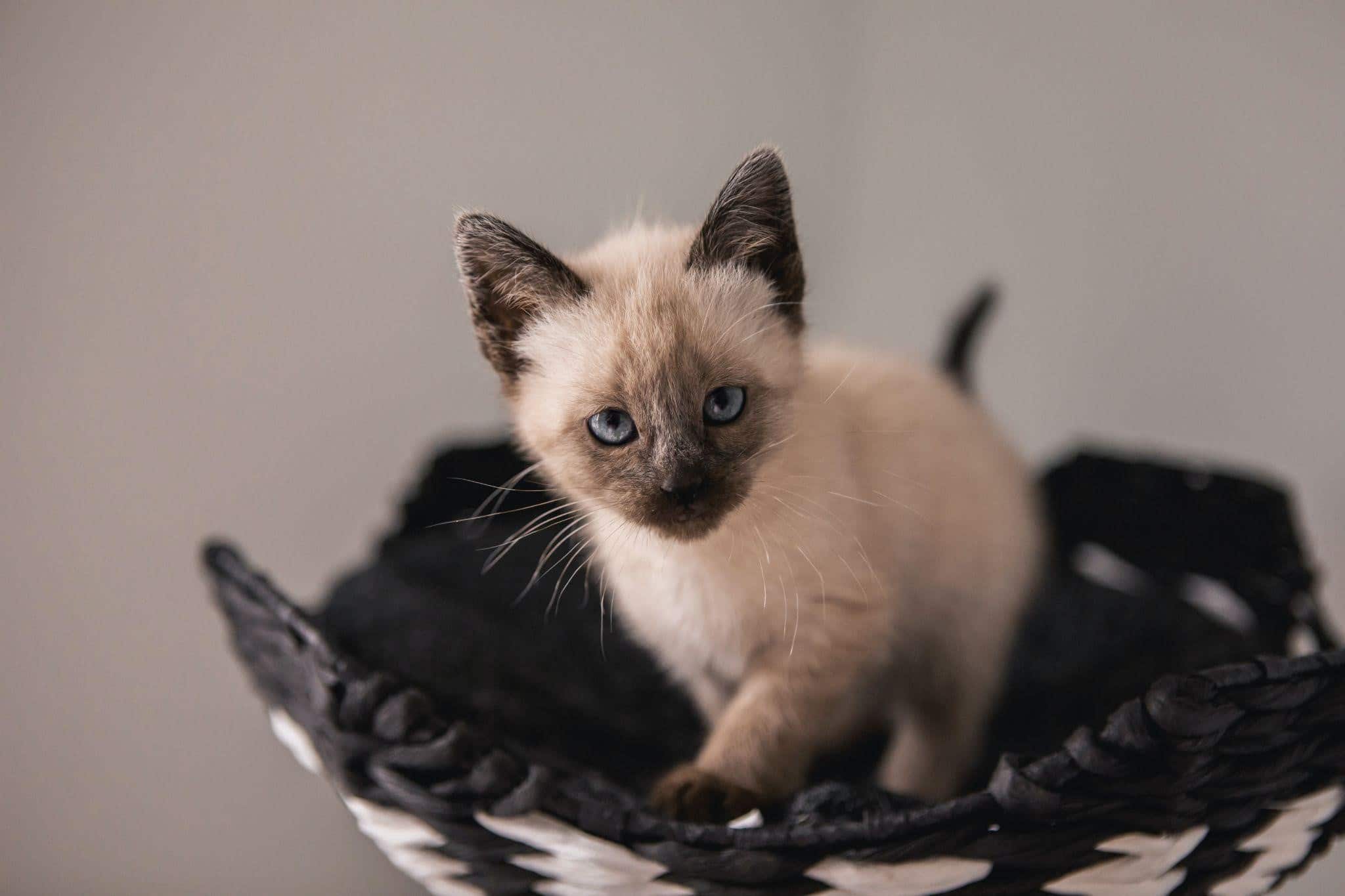
When it comes to finding Siamese kittens for sale, the best place to start is to source some reputable local breeders. If you try to buy a Siamese cat for sale from a pet store, you are taking the risk of not knowing where they are from, how healthy they truly are, or whether they have any pedigree certification.
So, contact three or four breeders in your area to get started – any decent breeder will be just as interested in finding out about you and the potential new home you will be providing for one of their kittens.
Once you are serious about buying a Siamese kitten, arrange to visit some breeders. The kittens should be playful, inquisitive, and generally happy to be handled. They should also have clean ears and bottoms and no runny noses or eyes.
Ideally, you want a kitten that has been brought up in the breeder’s house, as this gets them well-accustomed to all of the noise and busyness of a household, as well as being well-socialized.
Breeders should sell pedigree Siamese kittens with pedigree and registration certificates, as well as proof of their vaccinations against cat flu, panleukopenia (feline infectious enteritis), and rabies.
Sometimes, breeders sell pedigree Siamese kittens with approximately 2-6 weeks of insurance, after which time it is your responsibility to put your own pet insurance into place.
Most breeders also give new pet parents a starter pack of kitten food, or at the least provide information as to the particular food the kitten has been fed with to allow for continuity – this ensures that nutritional requirements are still met and avoids the kitten from suffering an upset stomach from a sudden change in food.
Some breeders will also require you to sign an agreement stating that you will have the kitten neutered or spayed when it reaches six months old.
Breeders may allow for kitten viewing once they reach six weeks old, but the standard minimum age for allowing a kitten to be taken to its new home is 13 weeks old.
As much as you will want to bring your Siamese kitten home sooner, waiting until it reaches 13 weeks old helps to ensure that they are well-socialized and vaccinated.
Siamese kittens are actually born a pure white color and develop their unique markings after they are four weeks old. Temperature-based pigments create the patterns characteristic of the breed. The center of the body is warmer and lighter, while the cooler extremities such as the tail and paw tips are darker in color.
Based on pedigree and general kitten quality, prices can vary quite significantly between breeders, and kittens are more expensive than older cats.
Generally speaking, a pedigree Siamese kitten will cost approximately $400-$600 in America (GBP250-GBP400 in the UK).
Siamese cats make excellent pets, so long as their inquisitive, chatty nature fits in nicely to the household and they are not left alone for too long. They are loving, playful, and low-maintenance; they just like to chat and receive lots of snuggles! Additionally, they truly are striking to look at, and their elegant movements are lovely to watch.